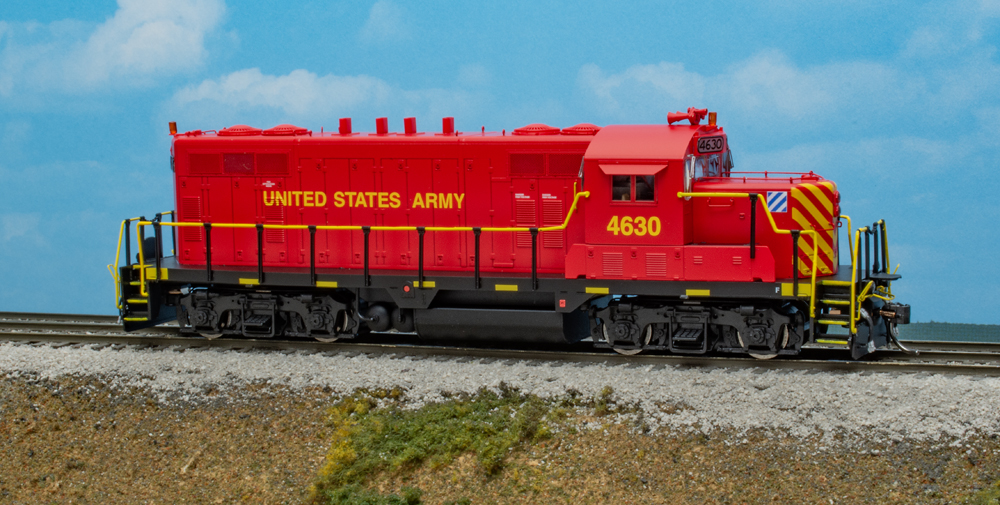
An HO scale GP16 diesel locomotive is the latest offering from InterMountain Railway Co. The model, based on prototypes rebuilt by Seaboard Coast Line (SCL) in the late 1970s and early 1980s, features an injection-molded plastic body; a die-cast metal chassis; and a variety of separate, factory-applied detail parts.
GP16 was the designation SCL gave to its fleet of rebuilt Electro-Motive Division GP7, GP9, and GP18 diesel locomotives. Between 1979 and 1982, 156 four-axle road units were rebuilt at the railroad’s Uceta Shops in Tampa, Fla.
Prototype history
The sample we received is decorated as United States Army No. 4630. The full-size unit was built by EMD in November 1956 as Seaboard Air Line GP9 No. 1976. Following the July 1967 merger between Seaboard Air Line and Atlantic Coast Line, the unit became SCL 1048.
In September 1979 the locomotive was rebuilt as a GP16, becoming SCL 4615. During the 1980s, SCL 4615 became Seaboard System RR 4615 and CSX Transportation 1715.
CSX retired the 1715 on February 19, 1993. The unit then went to Conrail where it was rebuilt at the railroad’s Juniata Shops for the United States Army. The locomotive was reclassified as a GP9M and renumbered 4630. During its time in the U.S. Army fleet, the four-axle unit has been assigned to Radford, Va., and Fort Stewart, Ga.
Model features
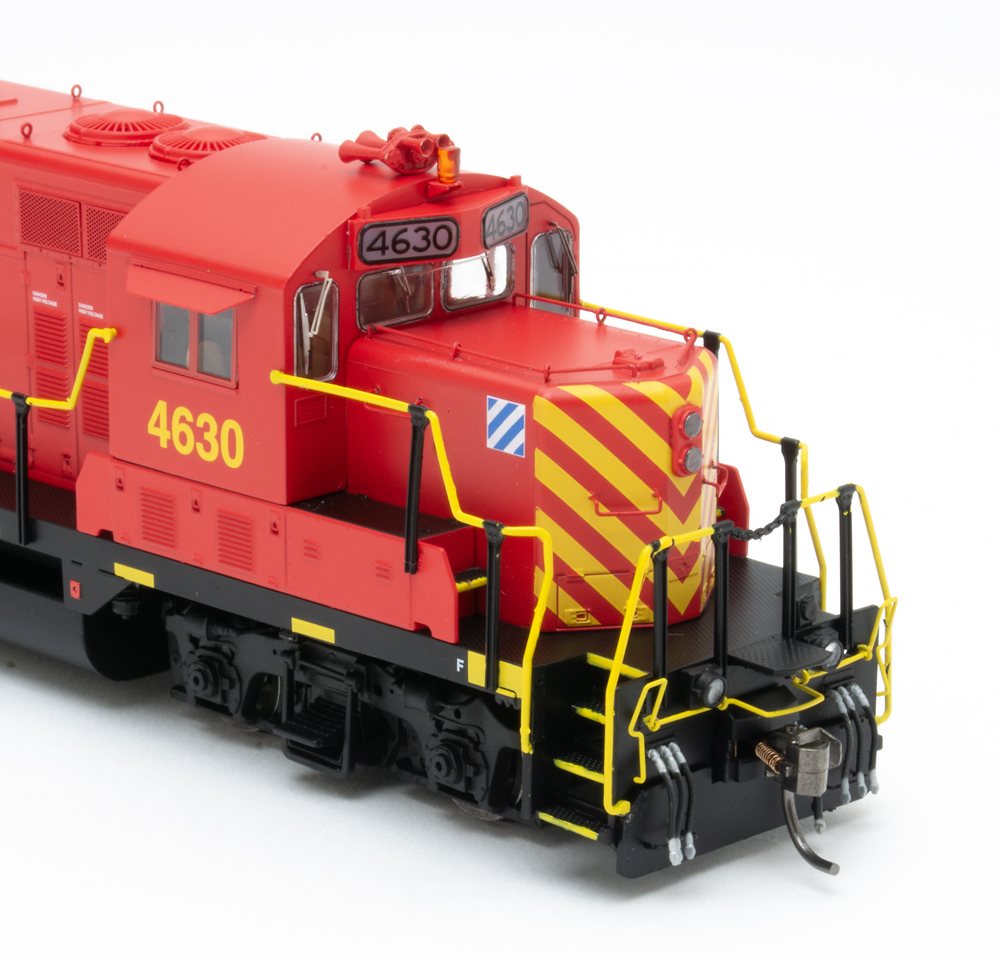
The GP16 features a multi-piece plastic shell consisting of the body, cab, and sill/stepwell unit. The front and rear pilots feature modernized pilot plates, wire m.u. hose loops, freestanding m.u. and trainline hoses, and wire uncoupling levers. Both pilots have fixed drop steps — the front lowered and the rear raised — as well as working ditch lights.
Additional model features include factory-installed and painted wire grab irons and lift rings, non-functioning strobe lights above the number boards on both ends, and etched-metal windshield wipers and cab sunshades. The handrails and stanchions are plastic.
A partial cab interior is visible through the cab windows. Details include three seats, a control stand, and a control panel and instrument board. All of the parts are painted light tan.
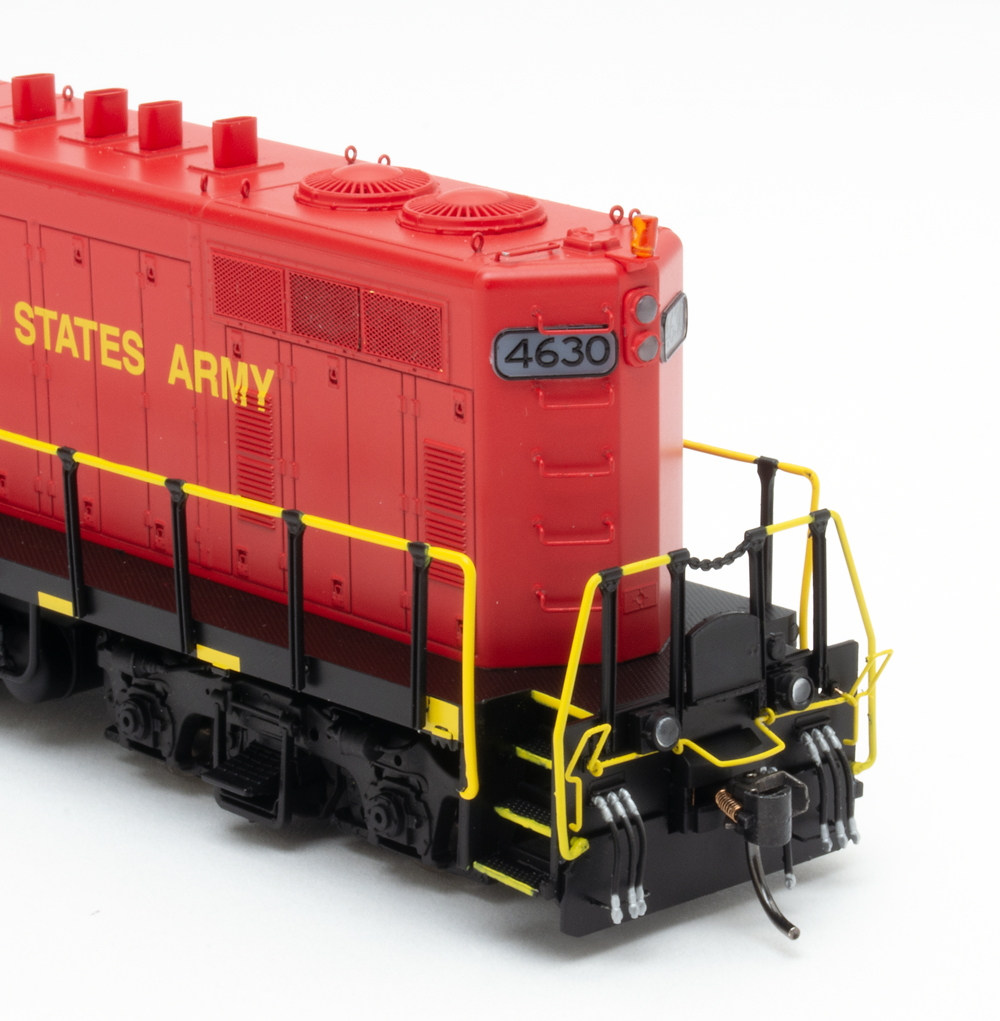
The radiator sections have plastic frames with etched-metal screens. Other long-hood details included four 36” plastic fans and the same number of molded stack plates with freestanding plastic stacks. The modified skirting matches the prototype.
The GP16 is equipped with plastic EMD Blomberg B trucks. The outside swing hanger, brake cylinders, and air line are factory-applied parts.
Model vs. prototype
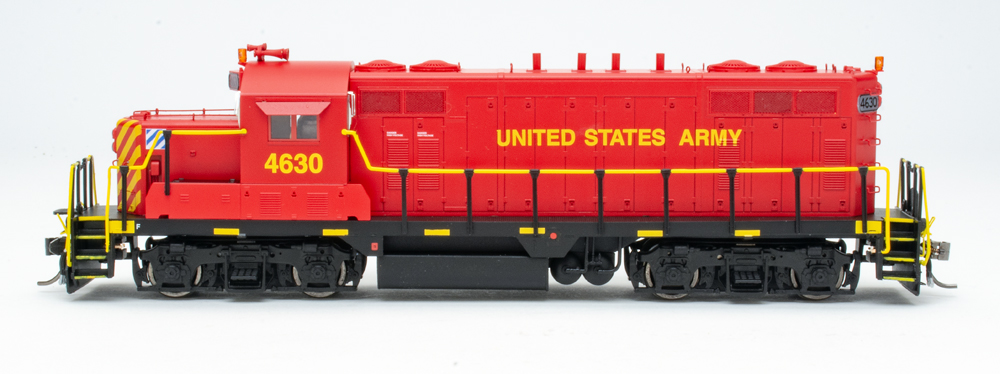
The model we received is painted in the United States Army’s red-and-black diesel scheme. The color separation lines are crisp, and the yellow letters, numbers, and chevrons are opaque. Both sides of the nose feature the insignia of the 3rd Infantry Division based at Fort Stewart, Ga.
I found prototype drawings of the SCL 4600-series GP16 online. The model’s dimensions match or are within scale inches of published data.
There were some detail discrepancies between the model and prototype. The model has late Pyle twin sealed-beam headlights; the prototype has the early version. The locomotive has rotary beacons, not strobe lights, and the front beacon is mounted between the number boards.
In addition, the first stanchion in front of the cab should be longer and attached to the sill. There’s also an extra set of louvers below the radiator screens at the rear of the long hood, and the position of some of the door latches don’t match the full-size engine.
In fairness, though, making a model based on a rebuild is tricky. The full-size GP16 diesels were rebuilt using GP7, GP9, and GP18 donors, so there were variations in body details and stanchions, among other items, from the start.
On the test track
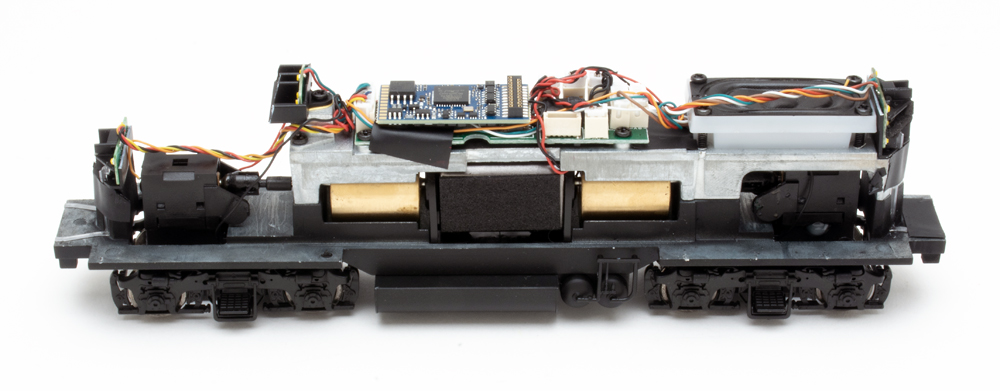
To separate the shell from the chassis, I first took out the front and rear draft-gear boxes. Then I used a Phillips-head screwdriver to remove a pair of screws between the front truck and fuel tank.
The motor with dual flywheels is centered in the chassis. A metal weight spans the motor, flywheels, and rear truck gear tower. The motherboard and ESU decoder are attached to the top of the weight. The speaker is located above the rear truck.
Our GP16 review model has an ESU LokSound V5 sound decoder. I first tested the four-axle road unit at the workbench with an NCE Power Cab. At speed step 1, the model crawled along at 1 scale mph. At step 28, the locomotive was moving at 78 scale mph. The prototype units had a top speed of 65 mph.
Then I took the unit over to our Winston-Salem Southbound Tar Branch to do some industrial switching. The GP16 navigated the No. 4 and 5 turnouts, 30-degree crossing, and 20” radius curves without issue.
I’ve always had a soft spot for rebuilt Geeps, and I’m glad InterMountain took a chance on the SCL GP16 in HO scale. Though only 156 units were built, examples can still be found in freight service on regional and shortline railroads and in switching duty at a variety of industries.
Watch a video of the InterMountain HO scale GP16 in action on our Winston-Salem Southbound Tar Branch layout.
Facts & features
Price: With ESU LokPilot non-sound decoder, $249.95; with ESU LokSound V5 sound decoder, $319.95
Manufacturer
InterMountain Railway Co.
P.O. Box 839
Longmont, CO 80502-0839
Era: 1979 to present (varies depending on paint scheme)
Road names: United States Army; Aberdeen, Carolina & Western; RJ Corman RR Co.; CSX; Indiana Rail Road; Louisville & Indiana; Pioneer Railcorp; Santa Fe Southern; and Seaboard Coast Line. One to four road numbers per scheme.
Features
- Metal couplers, both at correct height (trip pin on front coupler too low)
- Metal wheels on plastic axles, in gauge
- Minimum radius, 18”
- Weight: 14.8 ounces









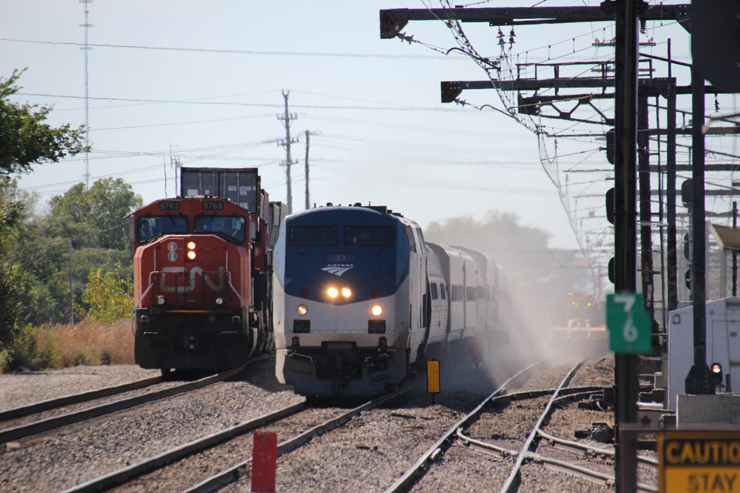




Thank you Intermountain for providing a truly modernized Geep, with no footboards, a current style uncoupling bar and ditch lights. Wonder if the engine was also upgraded to a 645? Still expect DC, though. Will consider as a “plant” loco on my auto factory module.